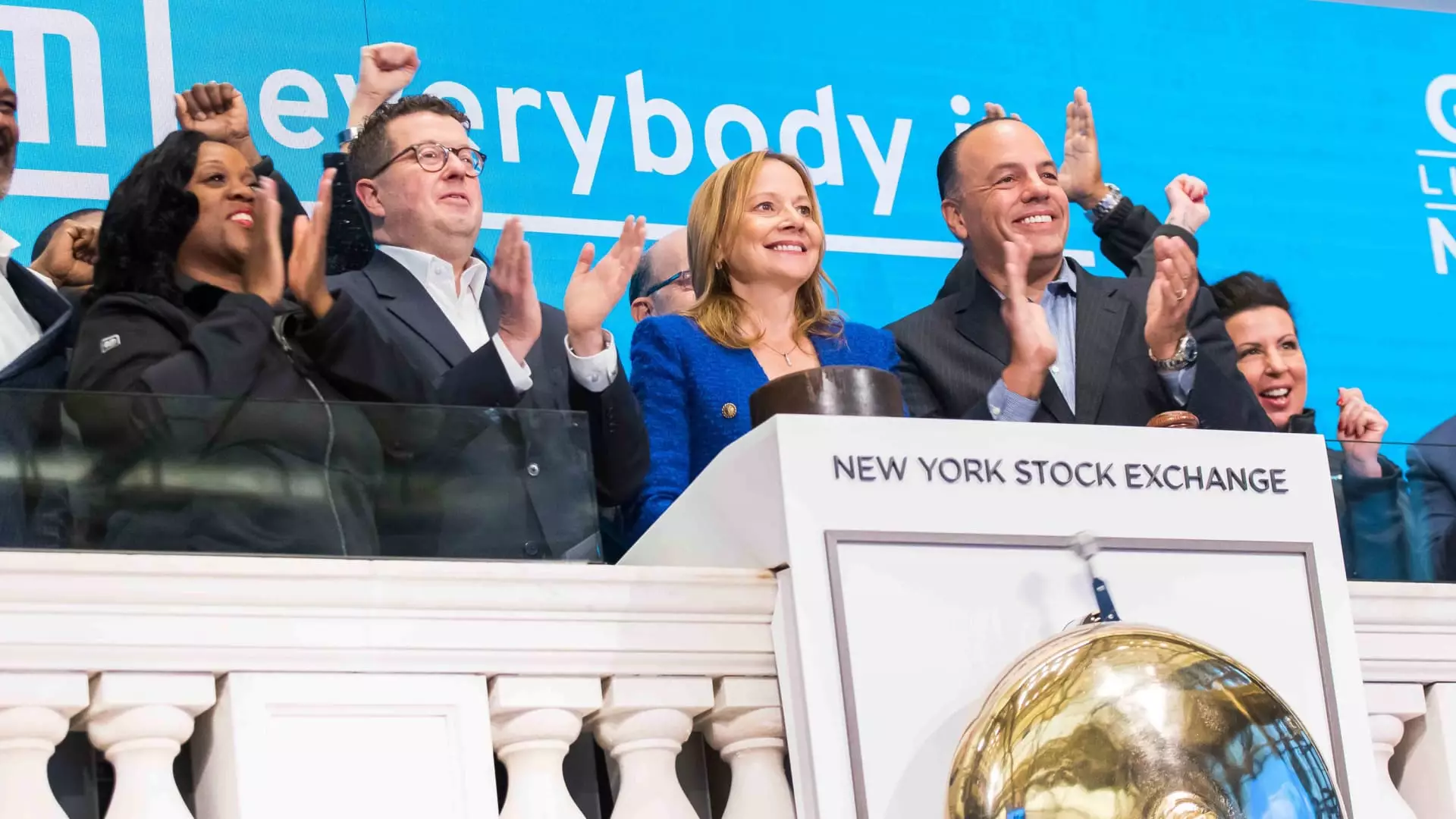In a landscape marked by fluctuating sales and shifting consumer demands, General Motors (GM) has taken proactive measures to reassure investors and secure its financial footing. The company recently announced a significant 25% increase in its quarterly dividend alongside a $6 billion share repurchase program, actions indicative of a firm commitment to shareholder returns. However, these strategic decisions unfold against a backdrop of mounting challenges, including stagnating industry sales and economic uncertainties that merit closer examination.
GM’s decision to boost its quarterly dividend from 12 to 15 cents per share aligns it with competitors like Ford, fostering an atmosphere of competitiveness within the automotive industry. By offering a more substantial dividend, GM is not only enhancing its appeal to investors but also signaling confidence in its operational stability. This increase, effective with the next payout scheduled for April, reflects how dividends can serve as a barometer of a company’s financial health, providing investors with a tangible return on their investments amid turbulent market conditions.
The initiation of a $6 billion share repurchase program underscores GM’s strategy to bolster its stock price and optimize its shareholder value. With $2 billion designated for an accelerated buyback during the second quarter, the corporation aims to capitalize on its current cash reserves. Historically, stock buybacks have been used as a means to reduce the total share count, which can elevate earnings per share and consequently enhance the stock’s appeal. The involvement of financial institutions such as JPMorgan and Barclays in executing this initiative adds a layer of robustness to the plan, ensuring that the repurchase actions align with market conditions.
Despite GM’s positive quarterly results and plans to return significant capital to shareholders, the company’s shares have experienced a notable decline of over 12% year-to-date. Analysts highlight several factors contributing to this downturn, with stagnating industry sales and regulatory uncertainties being the primary culprits. As the automotive sector grapples with shifting consumer preferences and increasing competition, GM’s ability to pivot towards sustainable growth avenues becomes crucial. The perceived lack of robust growth opportunities can diminish investor confidence, creating a dichotomy between strategic initiatives and market realities.
Amidst these complexities, GM executives, including CEO Mary Barra and CFO Paul Jacobson, have expressed unwavering confidence in the company’s strategic roadmap. The 2025 guidance projects a promising net income for stockholders between $11.2 billion and $12.5 billion, along with considerable expectations for adjusted automotive free cash flow. Such projections illustrate how GM is positioning itself to weather economic uncertainties while remaining committed to its long-term capital allocation strategy. However, the company will need to remain vigilant and flexible as market dynamics evolve, particularly regarding public policy and industry regulations.
GM’s recent financial maneuvers, including raising dividends and launching a substantial share repurchase program, highlight its deliberate approach to creating value for investors. While these initiatives are crucial for market positioning, the company must also address the skeptical sentiments arising from stagnation and regulatory challenges. The success of GM’s strategy hinges not only on financial metrics but also on its ability to adapt to a rapidly changing automotive landscape. Ultimately, maintaining balance between rewarding shareholders and sustaining growth will be vital for GM as it navigates the complexities of the automotive market in the years to come.

